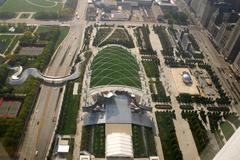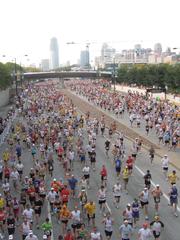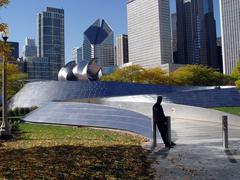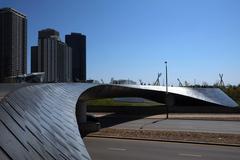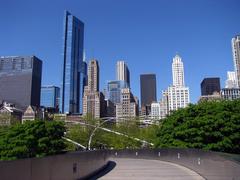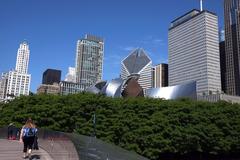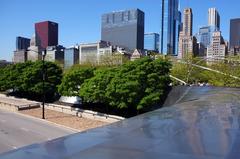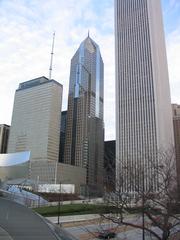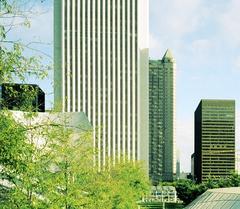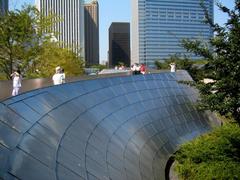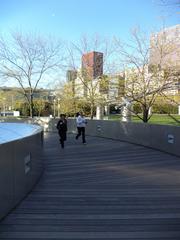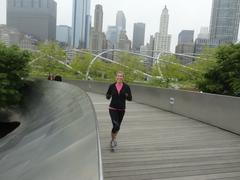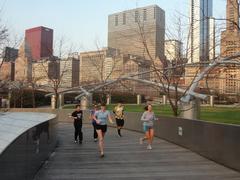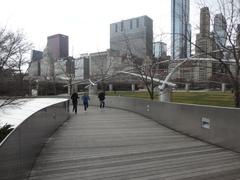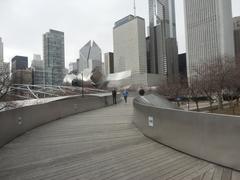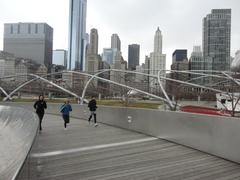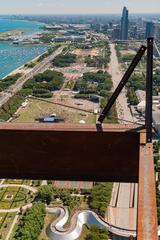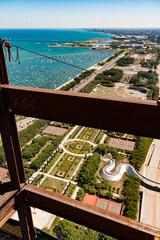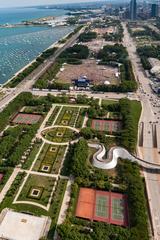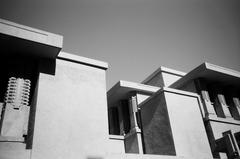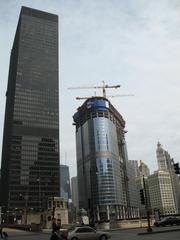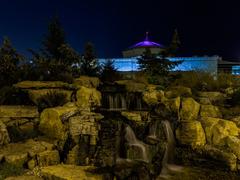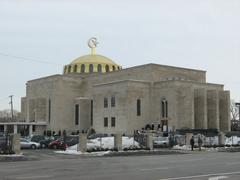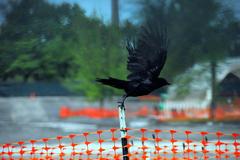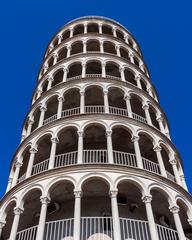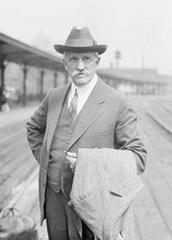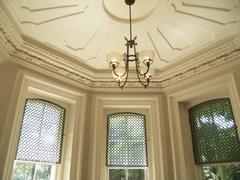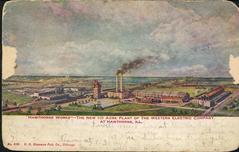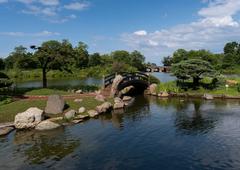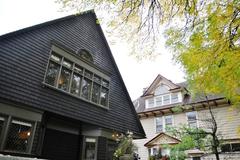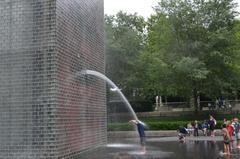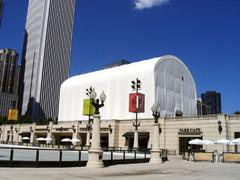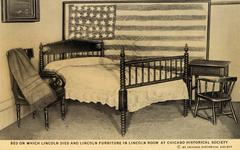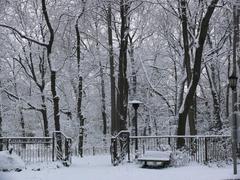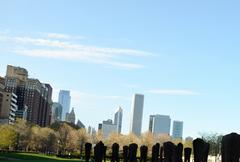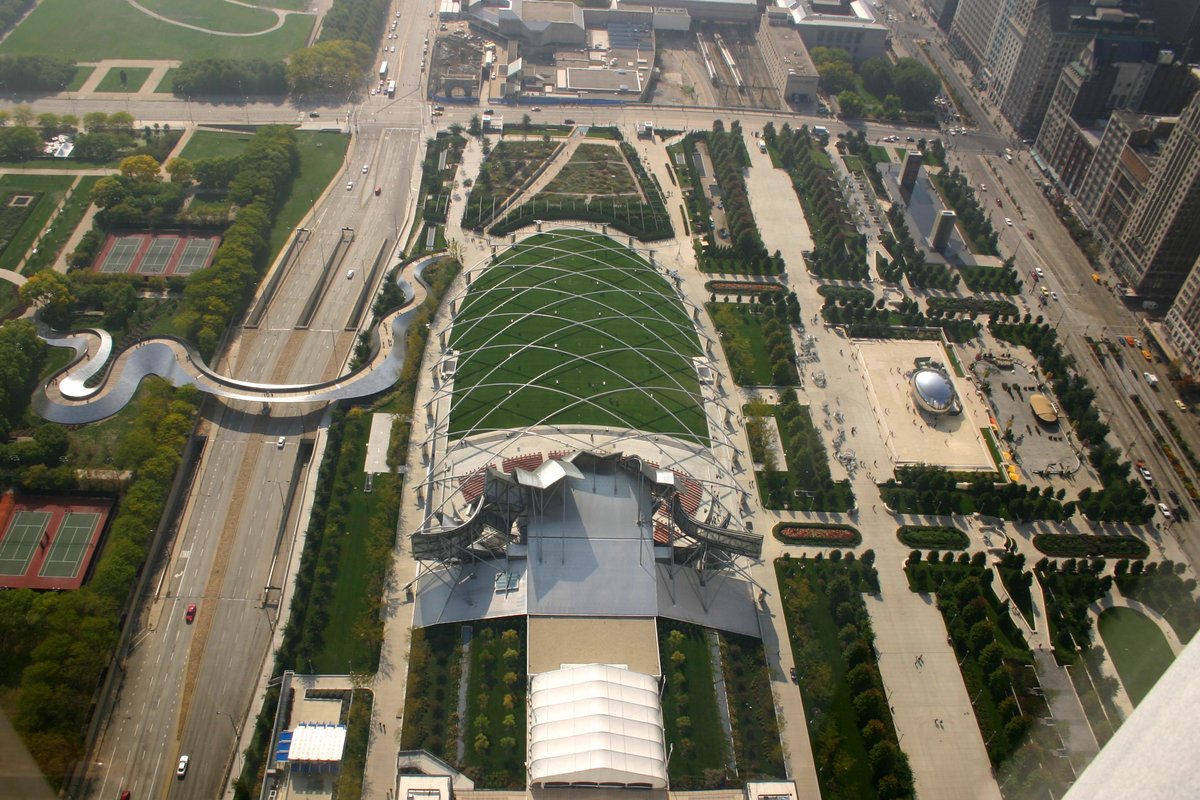
BP Bridge Visiting Hours, Tickets, and Travel Tips
Date: 01/08/2024
Introduction
The BP Pedestrian Bridge, an architectural feat designed by the illustrious Frank Gehry, stands as a testament to modern design and urban connectivity in Chicago. Spanning Millennium Park and Maggie Daley Park, this bridge is not merely a crossing but a destination in itself, offering visitors breathtaking views and a unique architectural experience. Conceived as part of the Millennium Park project, the bridge’s serpentine form and stainless steel shingles highlight Gehry’s innovative style (Dezeen). Since its opening in 2004, the BP Pedestrian Bridge has become an iconic feature of Chicago, celebrated for its role in enhancing the city’s urban landscape and connecting two major green spaces. This guide provides comprehensive information for anyone planning to visit, including historical insights, visitor tips, and a look into the bridge’s architectural and cultural significance.
Table of Contents
- Introduction
- History of BP Pedestrian Bridge
- Visitor Information
- Architectural Significance
- Cultural Impact
- Maintenance and Preservation
- Visitor Experience
- Special Events and Guided Tours
- Photographic Spots
- FAQ
- Conclusion
History of BP Pedestrian Bridge
Origins and Conception
The BP Pedestrian Bridge was conceived as part of the Millennium Park project, which aimed to transform a former rail yard into a vibrant public space. Initially designed by Skidmore, Owings & Merrill (SOM) in 2002, Frank Gehry was later brought on board to enhance the project (Dezeen).
Design and Construction
Gehry’s design features a serpentine form with a scaly exterior made from brushed stainless steel shingles. The 285-meter bridge connects Millennium Park to Maggie Daley Park, offering a wheelchair-friendly crossing over Columbus Drive. Over 10,000 steel panels in 17 different configurations were used in its construction, showcasing Gehry’s innovative approach (Dezeen).
Opening and Reception
The bridge opened to the public in 2004 and received mixed reviews. Despite initial skepticism, it has become a beloved feature of Chicago’s urban landscape (Dezeen).
Visitor Information
Visiting Hours and Tickets
The BP Pedestrian Bridge is open daily from 6 AM to 11 PM. Entry to the bridge is free, making it an accessible attraction for all visitors. No tickets are required to access the bridge.
Travel Tips
- Best Time to Visit: Early mornings and late afternoons offer the best lighting for photography and fewer crowds.
- Accessibility: The bridge is wheelchair-friendly and offers a smooth path for visitors of all abilities.
- Nearby Attractions: Millennium Park, Maggie Daley Park, and the Jay Pritzker Pavilion are all within walking distance.
- Parking: Limited parking is available nearby, so public transportation is recommended.
Architectural Significance
The bridge serves as an acoustic barrier, protecting pedestrians from traffic noise below—an integration of form and function that is a hallmark of Gehry’s work. It complements Gehry’s Jay Pritzker Pavilion, creating a cohesive public space (Dezeen).
Cultural Impact
Since its opening, the bridge has become an iconic symbol of Chicago’s commitment to public art and innovative architecture. It attracts millions of visitors annually, contributing to the city’s reputation as a cultural hub (Timeless Travel Steps).
Maintenance and Preservation
Maintaining the bridge involves regular cleaning and inspections to preserve its appearance and ensure safety. The City of Chicago is committed to these efforts as part of its broader maintenance of Millennium Park (Timeless Travel Steps).
Visitor Experience
Visitors can enjoy stunning views of the Chicago skyline and Lake Michigan. The bridge’s serpentine design encourages leisurely strolls, making it a popular spot for photography. It serves as a vital connection between Millennium Park and Maggie Daley Park (Timeless Travel Steps).
Special Events and Guided Tours
Occasional guided tours are available, providing deeper insights into the bridge’s design and history. Check the Millennium Park website for scheduled events and tours (Millennium Park Foundation).
Photographic Spots
Some of the best spots for photography include the mid-point of the bridge for panoramic views and the base for capturing its unique design against the skyline.
FAQ
Q: What are the BP Pedestrian Bridge visiting hours? A: The bridge is open daily from 6 AM to 11 PM.
Q: Do I need tickets to visit the BP Pedestrian Bridge? A: No, entry to the bridge is free.
Q: Is the BP Pedestrian Bridge wheelchair accessible? A: Yes, the bridge is wheelchair-friendly.
Q: What are some nearby attractions? A: Millennium Park, Maggie Daley Park, and the Jay Pritzker Pavilion are nearby.
Conclusion
The BP Pedestrian Bridge is a testament to the power of innovative design and public spaces. From its conception to its role in Chicago’s urban landscape, it remains a cherished landmark. Whether you’re a local or a tourist, a visit to this bridge offers a unique experience that blends architectural brilliance with the beauty of Chicago’s skyline. The bridge continues to draw millions of visitors annually, contributing significantly to the local economy and the city’s cultural landscape (Via Travelers).
